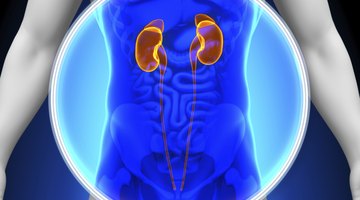DIC In Pregnancy
Disseminated intravascular coagulation -- also known as DIC -- is a rare, life-threatening blood disorder that can start suddenly. It is usually triggered by exposure to certain poisonous substances, extensive wounds or a serious infection. DIC can also be triggered by complications during childbirth. If not treated quickly, DIC can be fatal to the mother and baby.
Pregnancy and Blood Clots
Blood contains tiny cellular particles called platelets and other clotting factors that form web-like clots at a site of injury to stop bleeding. During pregnancy, the levels of clotting factors increase and platelet function changes, allowing clots to form more often and quickly. Clotting disorders, including DIC, are more likely to occur during pregnancy. DIC is a rare condition, but according to a 2009 article in "Thrombosis Research," as many as 5 percent of DIC cases are triggered by complications during labor and delivery.
Progression of DIC

Pregnancy Complications As a Result of Scarring
Learn More
Triggers of DIC in pregnancy include premature separation of the placenta from the uterine wall; serious infection; escape of the amniotic fluid surrounding the fetus into the mother's bloodstream; and injury to the uterus or fetus. When DIC is triggered, clots begin to form throughout the bloodstream. The clots lodge in small blood vessels, preventing circulation to the internal organs. The clotting factors in the blood are soon used up by the formation of multiple clots, and the clotting phase of DIC is followed by a bleeding phase. People with DIC can die of massive blood loss or organ failure if it is not treated quickly.
Symptoms
DIC can damage the lungs, making breathing difficult, and the kidneys may stop functioning. The bleeding phase of DIC is marked by small bruises, which can appear anywhere on the body. The gums and mucous membranes may bruise or bleed. Minor injuries, such as injection sites, continue to bleed because there are inadequate levels of platelets and clotting factors in the blood. Hemorrhage from larger injuries may be the first and most dangerous sign of DIC.
Treatment

The Medical Conditions That Cause a False Positive in Pregnancy Results
Learn More
The first step in treating DIC is to remove the trigger as soon as possible. During pregnancy, this usually means delivering the baby. The woman is given clotting factors to replace those that have been used up during the clotting phase of DIC. She may be given a large blood transfusion, replacing much of her depleted blood with new red blood cells, platelets and other blood components. If the woman continues to bleed, a hysterectomy may be performed to stop the hemorrhage.











